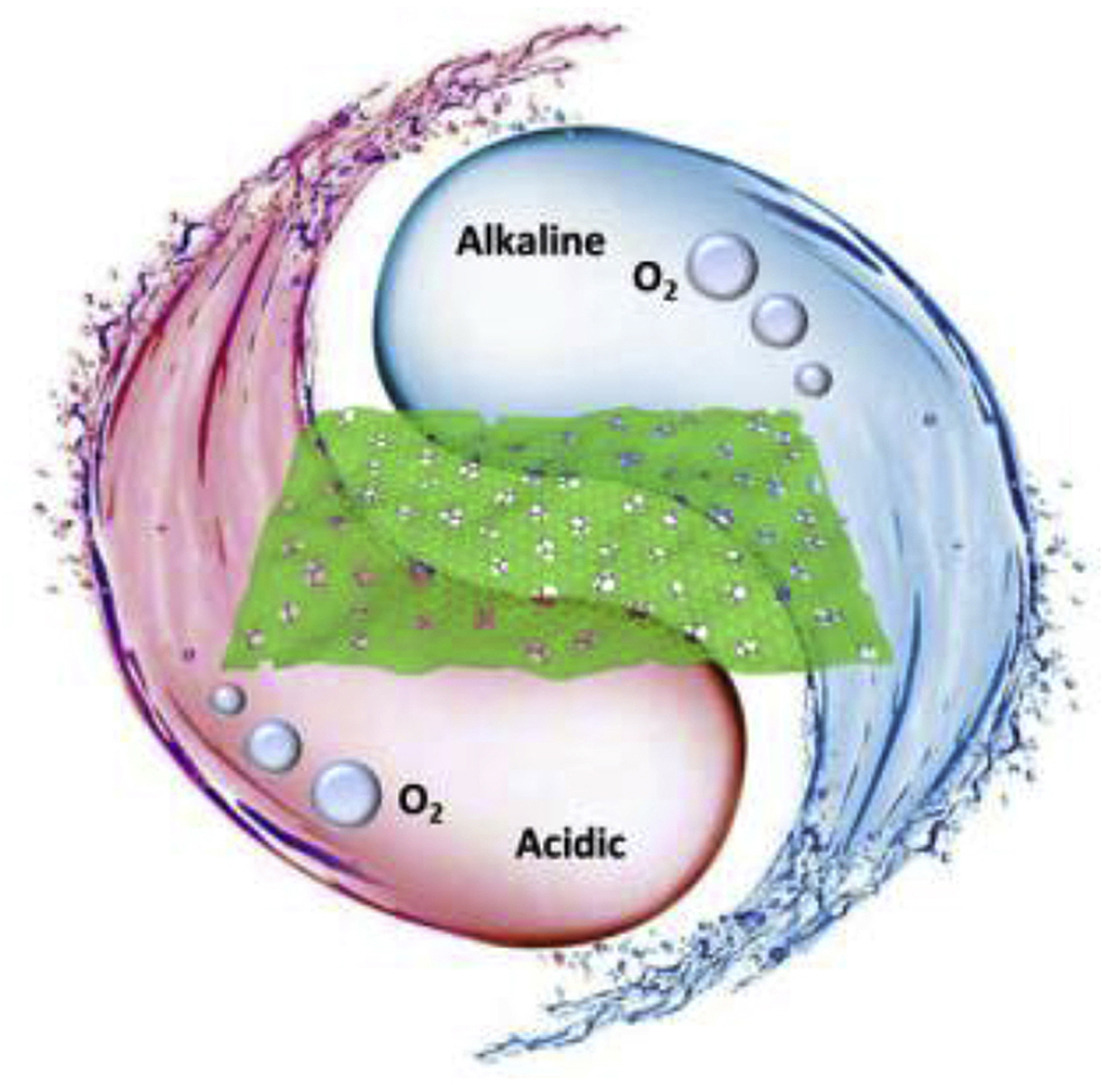Y.G. Li, Y. Wang, J.M. Lua, B. Yang, X.Y. San, Z.-S. Wu*
Nano Energy, 2020, 78, 105185.
DOI: 10.1016/j.nanoen.2020.105185 [PDF]

Exploring highly active and stable oxygen evolving electrocatalysts is the key for electrochemical water splitting and renewable chemical conversion. RuO2is one of the benchmark oxygen evolving electrocatalysts, but remains challenging in high activity in all-pH electrolytes. Herein, we report a confined oxygenation strategy using the finite oxygen species from graphene oxide to synthesize two dimensional (2D) heterostructures of intrinsically defective RuO2nanocrystals uniformly grown on graphene (2D D-RuO2/G), showing ultrathin thickness of 9 nm, high specific surface area of 125 m2g−1, enriched hydroxylated surface and notably intrinsic defective RuO2with low Ru–O coordination number of 5. Consequently, 2D D-RuO2/G exhibits a robust stability and an extraordinary oxygen evolution reaction (OER) performance both in acidic and alkaline solutions, achieving a current density of 10 mA cm−2at the overpotential of 169 and 175 mV, and a water oxidation turn over frequency of 1.07 and 1.25 S−1at 270 mV, respectively, corresponding to 344 mV of total overpotential at 10 mA cm−2in acidic and alkaline electrolytes, which greatly exceeds the state-of-the-art of pH-universal OER electrocatalysts. Theoretical studies indicate that intrinsic defective Ru sites can enhance the adsorption and accelerate the decomposition of hydroxyl groups to boost the OER activity. This confined oxygenation strategy provides the opportunities to construct 2D advanced defective OER electrocatalysts in all-pH electrolytes.